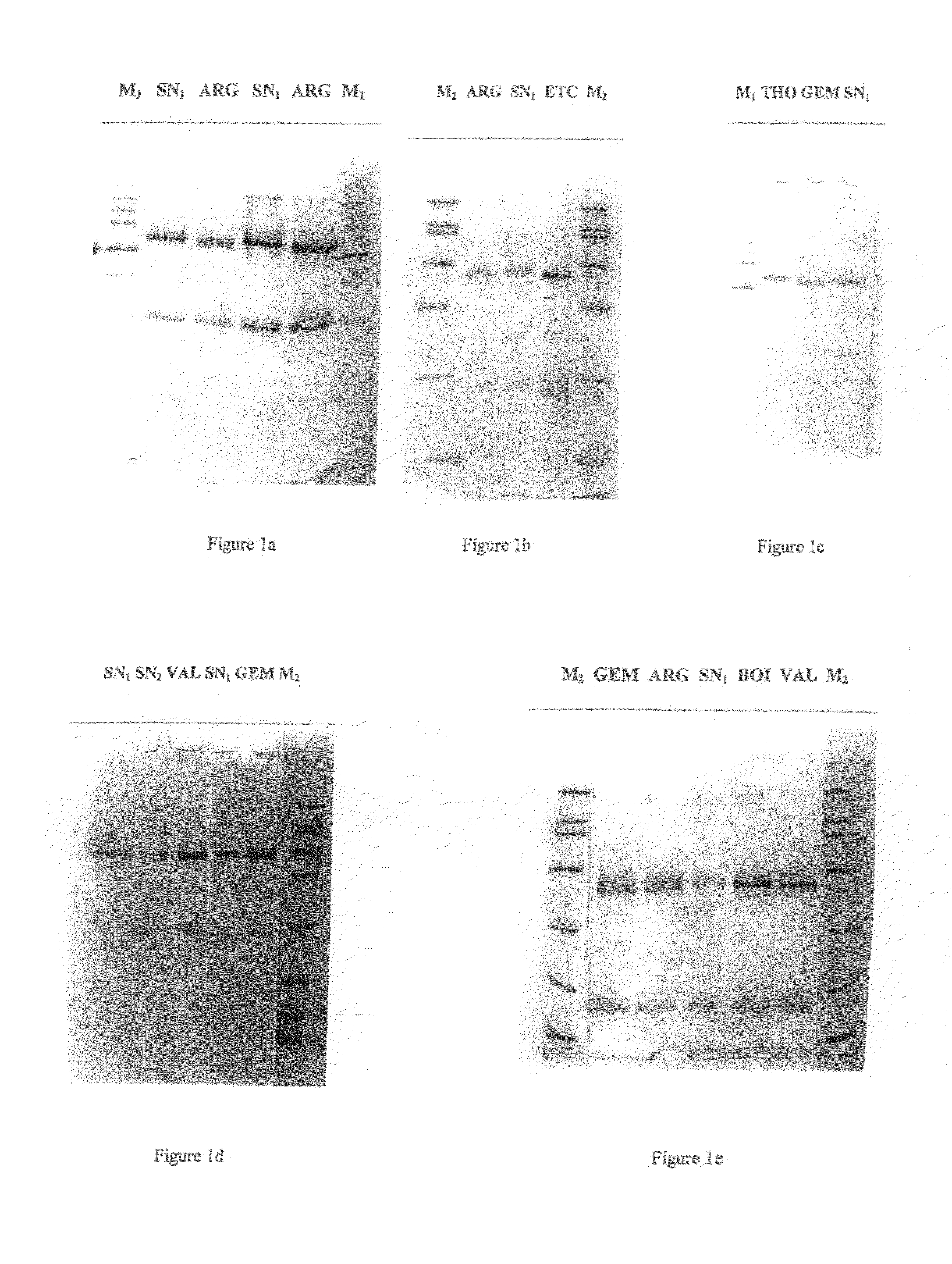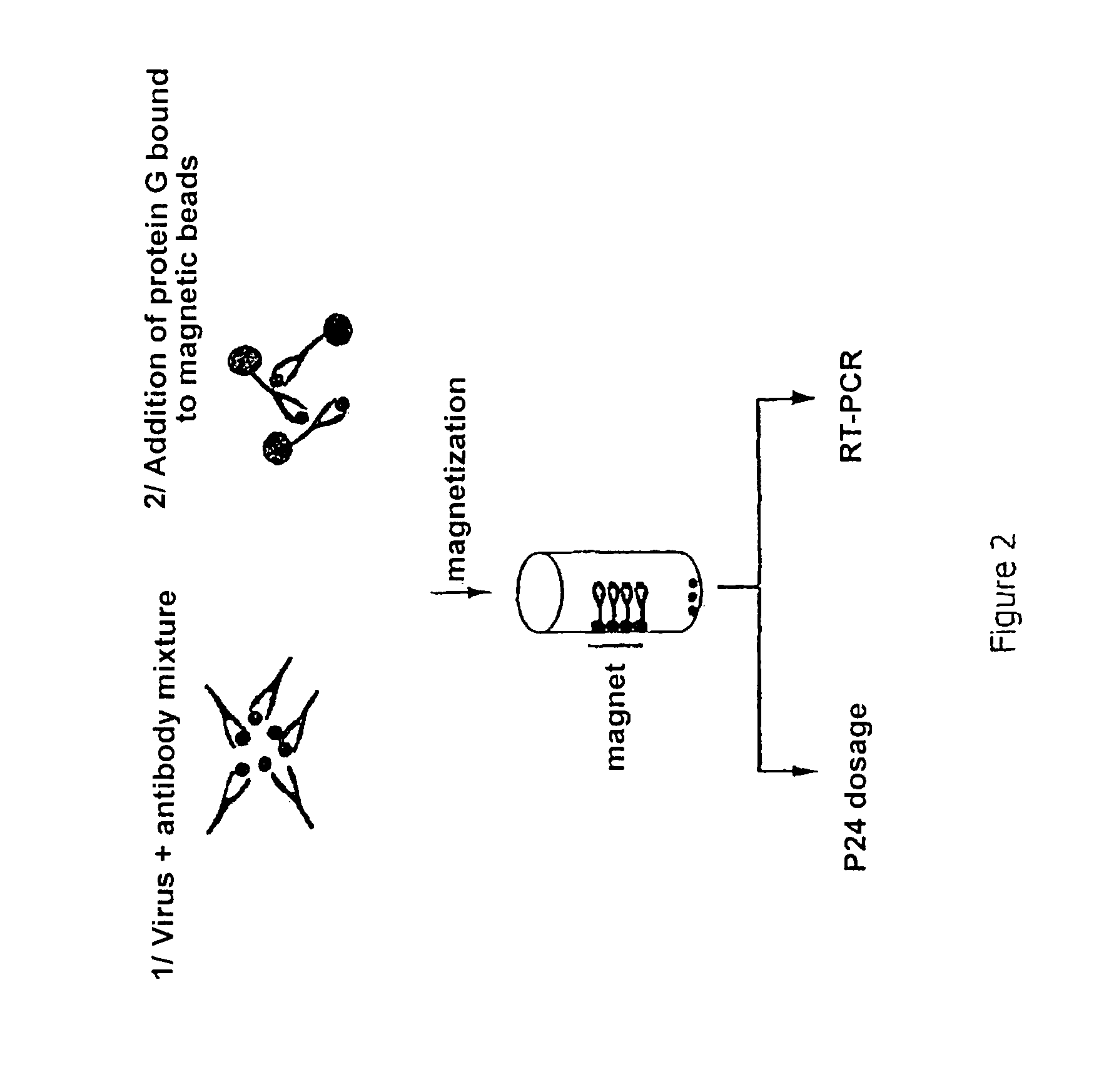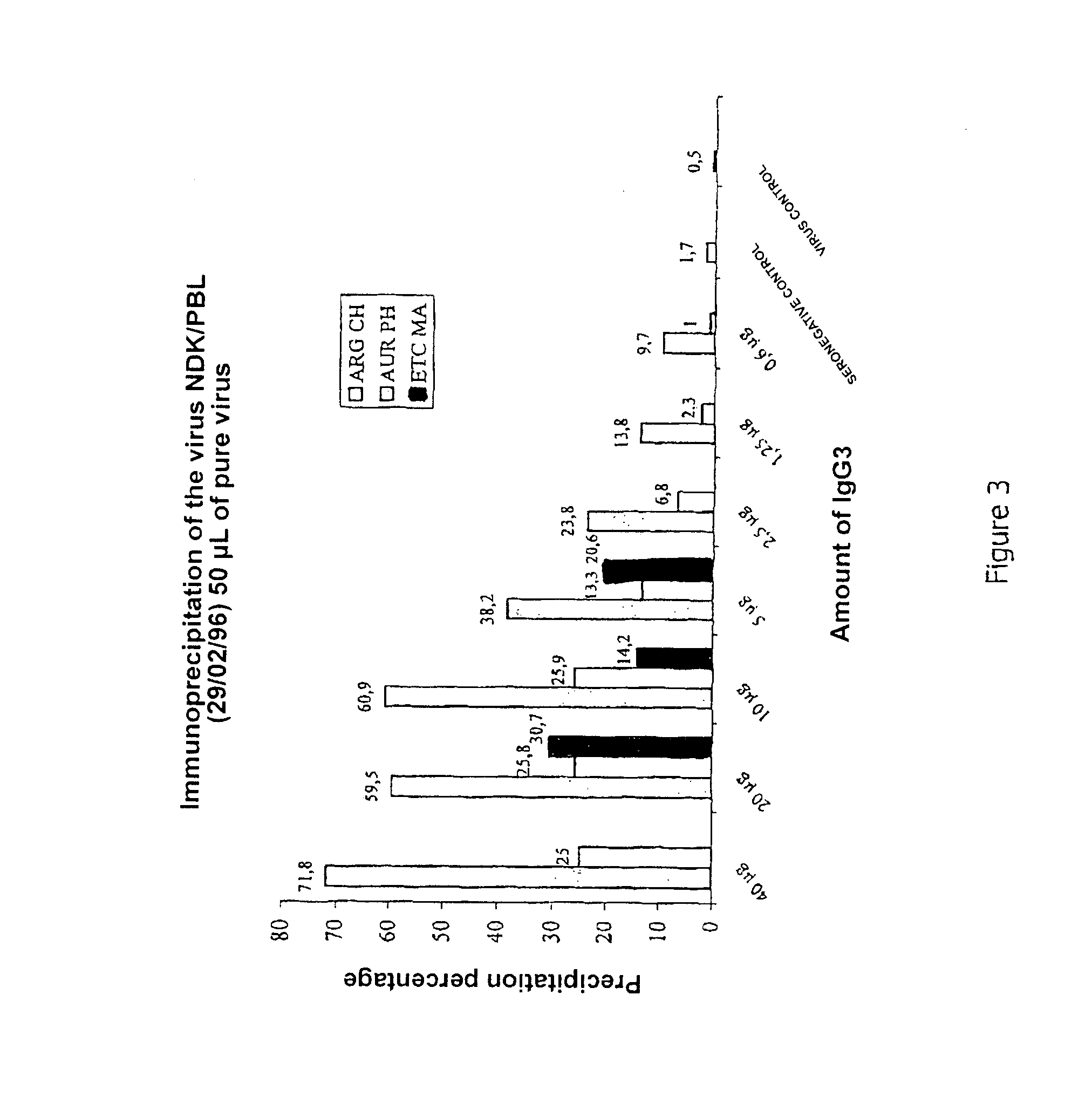Immunoglobulin IgG3 as a marker for protecting against infectious viral diseases, and the uses of the same
a technology of immunoglobulin and infectious viral diseases, applied in the field of biochemistry, can solve the problems of many problems in the obtaining effective treatment of hiv replication mechanism, the inability to detect and/or purify the immunoglobulin igg3 gene, and the inability to detect and purify the same,
- Summary
- Abstract
- Description
- Claims
- Application Information
AI Technical Summary
Benefits of technology
Problems solved by technology
Method used
Image
Examples
example 1
Demonstration of IgG3 Variants in Certain Individuals Infected with HIV and Qualified as Non-Progressors
[0048]The immunoglobulin antibodies are divided into four subclasses, and generally the antibodies induced after immunization belong to the IgG1s, which have a very long half-life.
[0049]The inventors describe here, in patients infected with HIV, the presence of protective antibodies associated with IgG3s, whereas the antibodies which indicate infection are always IgG1s. An IgG3 variant exists in some individuals who are infected with HIV and are qualified as non-progressors.
[0050]1.1. The IgG3 Variant has a Life Span of Several Months
[0051]This variant differs from the conventional IgG3s in terms of its half-life; the half-life is seven days for conventional IgG3s and several months for the variant, as shown by the study on the patient sequential follow-ups, the serums being sampled at intervals of several months (Table 1).
[0052]Table 1 shows the results of an ELISA test searching...
example 2
Immunoprecipitation of HIV with Total IgG3s, Purified from Non-Progressor HIV-Positive Patients
[0067]2.1. Experimental Protocol:
[0068]A desired amount of pure HIV virus is added to a given amount of IgG3 and the mixture is left to incubate for 1 hour at +4° C.
[0069]The following are then added:[0070]either 50-100 μL of protein G bound to magnetic beads, and incubation is carried out for 1 hour at +4° C. (protein G binds the IgG1, IgG2, IgG3 and IgG4 antibodies)[0071]or 50-100 μL of protein A bound to magnetic beads, and incubation is carried out for 1 hour at +4° C. (protein A binds the IgG1, IgG2 and IgG4 antibodies but not the IgG3s).
[0072]The beads fix to that wall of the tube which is closest to the applied magnetic field, and the protein G bead-IgG3-virus complex can then be isolated. The virus bound to the antibodies is then demonstrated by measuring the viral protein P24 released after lysis of the virus from the immunoprecipitated virus (COULTER kit (6604535)) and / or by the ...
example 3
Neutralization of HIV by Total IgG3s, Purified from Non-Progressor HIV-Positive Patients
[0078]3.1. Experimental Protocol:
[0079]50 μL of IgG3 solution+50 μL of diluted virus (in 10% RPMI medium) are incubated for 1 hour at 37° C. in a 96-well plate. Then, 0.3×106 cells per well are added to the mixture and placed at 37° C. for 1 hour. Following two washes with 0% RPMI medium, the cells are placed in a 24-well plate in 10% RPMI medium in the presence of IgG3s (FIG. 6).
[0080]3.2. Results (cf. Table 5)
[0081]
TABLE 5Neutralization of NDK / PBL (29 Feb. 1996) by IgG3s orIgG1,2,4s of ARG CH, ETC MA, AUR PH and THO MI.Dose(μg / mL)Day 3Day 4Day 5Day 6ARG CH IgG3 40 μg / mL−(+)++++T−(+)++++T 20 μg / mL−−(+)+−−+++T 10 μg / mL(+)+++++T(+)+++++T 5 μg / mL(+)−(+)+(+)(+)++++TARG CH IgG1,2,4 40 μg / mL−(+)+++T−(+)++++T 20 μg / mL(+)+++++T−(+)++++T 10 μg / mL+++++++T−(+)+++T 5 μg / mL(+)+++++T(+)+++++TETC MA IgG3 100 μg / mL(+)+++++T(13 Sep. 2001)−(+)++++T 50 μg / mL(+)+++++T−(+)++++T 25 μg / mL(+)+++++T(+)+++++T12...
PUM
| Property | Measurement | Unit |
|---|---|---|
| molecular weight | aaaaa | aaaaa |
| concentration | aaaaa | aaaaa |
| molecular weight | aaaaa | aaaaa |
Abstract
Description
Claims
Application Information
 Login to View More
Login to View More - R&D
- Intellectual Property
- Life Sciences
- Materials
- Tech Scout
- Unparalleled Data Quality
- Higher Quality Content
- 60% Fewer Hallucinations
Browse by: Latest US Patents, China's latest patents, Technical Efficacy Thesaurus, Application Domain, Technology Topic, Popular Technical Reports.
© 2025 PatSnap. All rights reserved.Legal|Privacy policy|Modern Slavery Act Transparency Statement|Sitemap|About US| Contact US: help@patsnap.com



